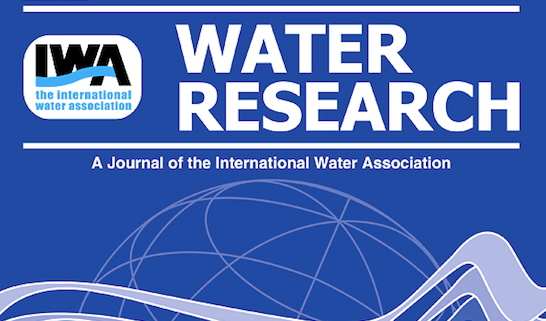
Hi all…there are a lot of warnings about the impact of climate change on drinking water safety, especially as it pertains to cyanobacteria and their toxins (for example microcystin, cylindrospermopsin, and anatoxin). A paper recently published in the journal Water Research provides some hard evidence to suggest that climate change is related to, or associated with, cyanobacterial occurrence (it is hard to even describe the connection between the two given some uncertainties). Aside from the paper title, what got my attention is the statement that reads “A steady increase in the abundance of Microcystis (as potential toxin producers) during the past thirty years was correlated with increasing temperatures and declining wind speeds, but not with temporal trends in lake water nutrient concentrations, highlighting recent climate effects on potentially increasing toxin-producing taxa.” It will be interesting to see how this paper is received.
Bill
_______________________________________________
Ancient DNA reveals potentially toxic cyanobacteria increasing with climate change
Jifeng Zhang, Kun Shi, Hans W. Paerl, Kathleen M. Rühland, Yanli Yuan, Rong Wang, Jie Chen, Mengjuan Ge, Lingling Zheng, Zhiping Zhang, BoqiangQin, Jianbao Liu, and John P. Smol
Water Research Volume 229, 1 February 2023, 119435, doi: https://doi.org/10.1016/j.watres.2022.119435
Abstract
“Cyanobacterial blooms in freshwater systems are a global threat to human and aquatic ecosystem health, exhibiting particularly harmful effects when toxin-producing taxa are present. While climatic change and nutrient over-enrichment control the global expansion of total cyanobacterial blooms, it remains unknown to what extent this expansion reflected cyanobacterial assemblage due to the scarcity of long-term monitoring data. Here we use high-throughput sequencing of sedimentary DNA to track 100 years of changes in cyanobacterial community in hyper-eutrophic Lake Taihu, China’s third largest freshwater lake and the key water source for ~30 million people. A steady increase in the abundance of Microcystis (as potential toxin producers) during the past thirty years was correlated with increasing temperatures and declining wind speeds, but not with temporal trends in lake water nutrient concentrations, highlighting recent climate effects on potentially increasing toxin-producing taxa. The socio-environmental repercussions of these findings are worrisome as continued anthropogenic climate change may counteract nutrient amelioration efforts in this critical freshwater resource.”





